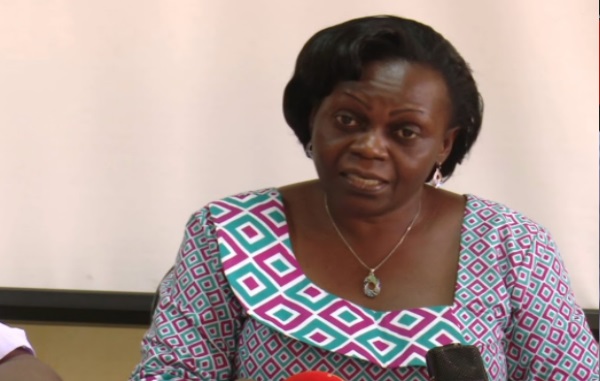When a strange disease was reported in the cattle corridor in the district of Nakaseke, the Permanent Secretary in the Ministry of Health Dr. Diana Atwine blasted the media for causing uproar across the country. “There is no cause for alarm, Uganda; we have developed very strong mechanisms to deal with any epidemic.” Her outburst was the 9-year-old boy who was hospitalized at Kiwoko Hospital which had been widely reported about in the media. “Let us not jump on excitement for anything that we hear from different people, we are in control, we are in charge. I want to tell you that the Ministry of Health is fully in-charge.” Said, Dr. Diana Atwine – Permanent Secretary, Ministry of Health.
Despite her denial, the Ministry of Health confirmed that the 9-year-old boy tested positive for Congo Crimean Hemorrhagic Fever disease but was recovering after receiving treatment. “On the 27th of December 2017, results from the Uganda Virus Research Institute tested positive for the Crimean Congo Hemorrhagic Fever and negative for other Hemorrhagic Fevers like Ebola, Marburg, Rift Valley Fever and Sosugar. The patient was maintained on supportive treatment in an isolation unit at Kiwoko Hospital and am glad to report that this patient greatly improved. So following his positive improvement and positive response to the treatment that was provided. Second samples were collected on the 4th of January 2018 and sent to the Uganda Virus Research Institute to ascertain whether the virus had cleared on supportive treatment, the results showed that this child was no longer infectious of the Crimean Congo Hemorrhagic Fever and was therefore discharged on 5th January 2018.” Said, Sarah Opendi – State Minister for Health.
Sarah Opendi the Minister for Health, however, dismissed reports that the 9-year-old girl Bridget Nalunkuma who died on Thursday circummed to the same Congo Crimean Hemorrhagic Fever disease. “A 9-year-old girl from Buswagilo village Nakonge Parish, Wachato Sub-County presented with high-grade fever, nose bleeding and vomiting blood. She died on arrival at Butalangu Health Center II. A blood sample was taken to Uganda Virus Research Institute and the laboratory results received on the 13th of January 2018 were negative for the Crimean Congo Hemorrhagic Fever and other viral Hemorrhagic Fevers that include Ebola, Marburg, Rift Valley Fever and Sosugar.”
Opendi said the Ministry of Health was still investigating what could have caused her death. “So the Ministry of Health is continuing to investigate the possible cause of death of this young girl in collaboration with our partners.” Nalunkuma’s death caused glitters among the locals when she bore symptoms similar to Congo Crimean Hemorrhagic fever and the manner in which health workers handled her burial. “Yes we are aware of the 8 cases, 8 people that were reported or suspected to have died of the Crimean Congo Hemorrhagic Fever and none of the 8 cases tested positive for the Crimean Congo Hemorrhagic Fever so they could have died of something else.”
The Ministry however empowered the public to be vigilant to always look out for symptoms associated with the disease. “In humans, the Crimean Congo Hemorrhagic Fever can present with several symptoms that include sudden onset of high-grade fever, muscle aches, neck pains, neck stiffness, backache, headache, sore eyes, vomiting, diarrhea, abdominal pain and sometimes bleeding from body openings.”
The disease is caused by infected ticks through direct tick bites or blood of an infected animal. “These animals become infected after being infected by ticks and the virus remains in their bloodstream for about two weeks after infection allowing the tick animal – tick cycle to continue when another tick bites.”

